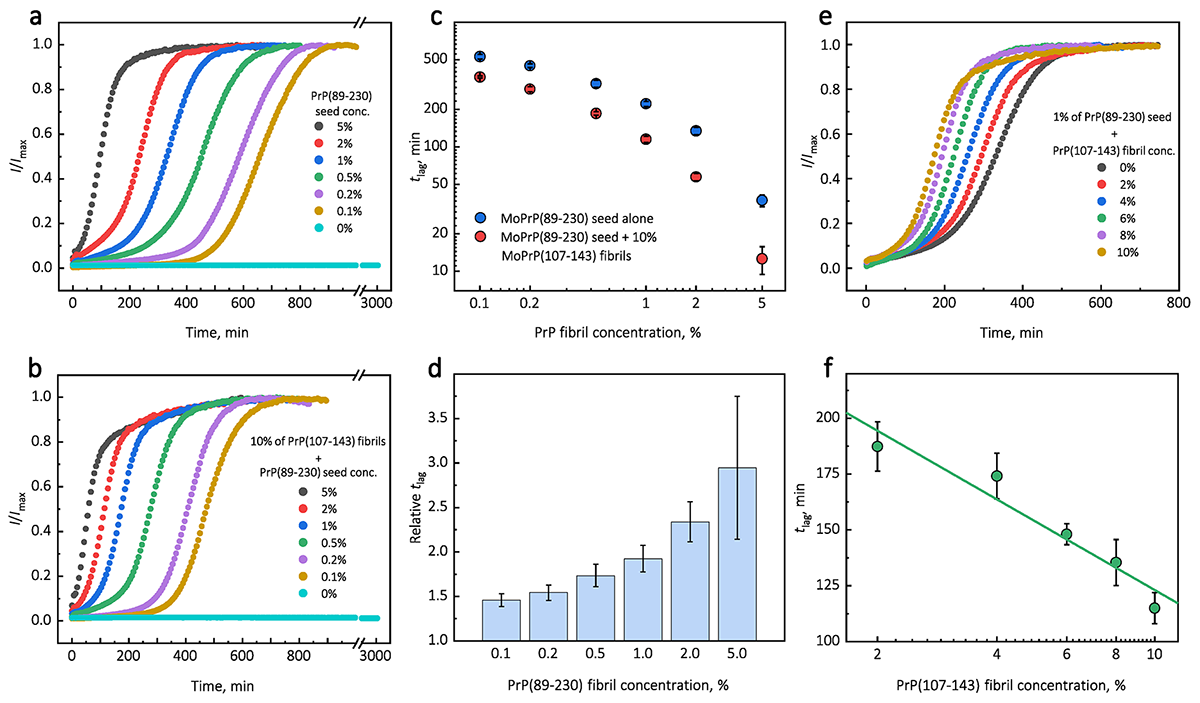Prion protein amyloid aggregates are associated with infectious neurodegenerative diseases, known as transmissible spongiform encephalopathies. Self-replication of amyloid structures by refolding of native protein molecules is the probable mechanism of disease transmission. Amyloid fibril formation and self-replication can be affected by many different factors, including other amyloid proteins and peptides. Mouse prion protein fragments 107-143 (PrP(107-143)) and 89-230 (PrP(89-230)) can form amyloid fibrils. β-sheet core in PrP(89-230) amyloid fibrils is limited to residues ∼160-220 with unstructured N-terminus. We employed chemical kinetics tools, atomic force microscopy and Fourier-transform infrared spectroscopy, to investigate the effects of mouse prion protein fragment 107-143 fibrils on the aggregation of PrP(89-230). The data suggest that amyloid aggregates of a short prion-derived peptide are not able to seed PrP(89-230) aggregation; however, they accelerate the self-replication of PrP(89-230) amyloid fibrils. We conclude that PrP(107-143) fibrils could facilitate the self-replication of PrP(89-230) amyloid fibrils in several possible ways, and that this process deserves more attention as it may play an important role in amyloid propagation.

 Institute of Biological Chemistry, Academia Sinica
Institute of Biological Chemistry, Academia Sinica
